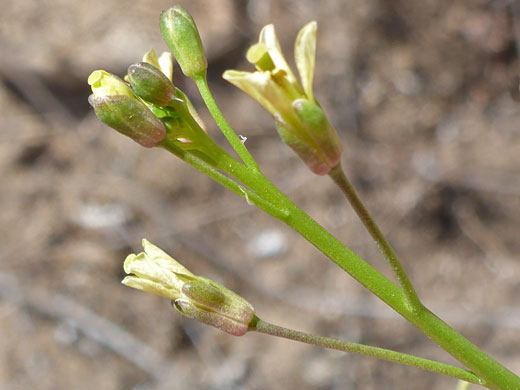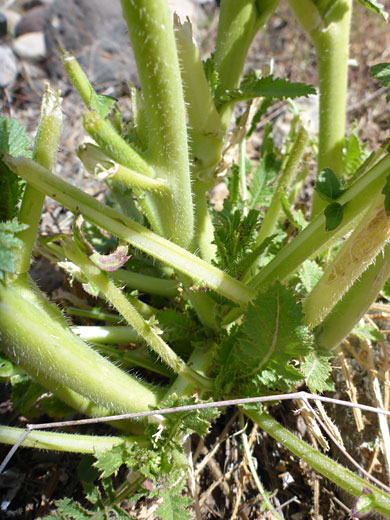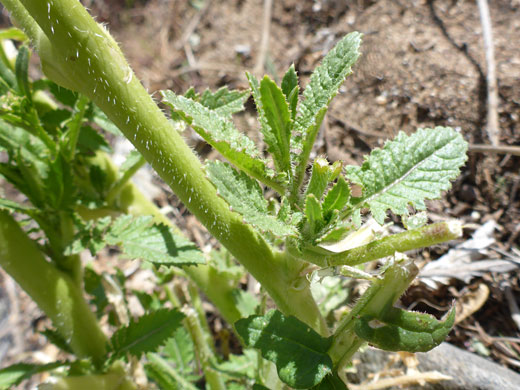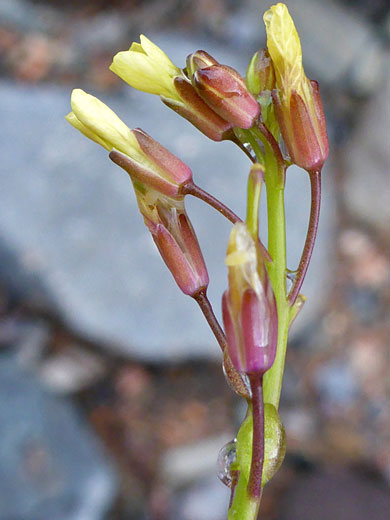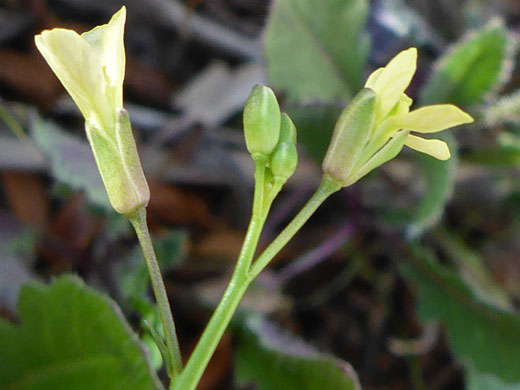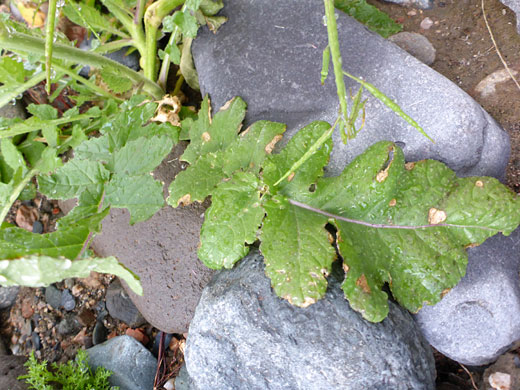Common name:
Pale cabbage
Family:
Scientific name:
Brassica tournefortii
Main flower color:
Range:
Southern California, southern Nevada, Arizona, and small parts of Utah and New Mexico (non-native)
Height:
Up to 30 inches
Habitat:
Washes, roadsides, open slopes; up to 2,500 feet
Leaves:
Bristly-hairy; basal leaves are pinnately lobed, up to 4 inches long. Stem leaves, few in number, are unlobed
Season:
January to June
Leaves and stem of brassica tournefortii, a Eurasian species, are covered with short, spreading, bristly hairs. Leaves are mainly basal; here they are pinnately lobed, with between four and ten pairs of side lobes, becoming larger towards the tip, and a rounded terminal lobe. Stem leaves are smaller, unlobed, and tapering at the base. All leaves are lined by small, sharp teeth.
Flowers have hairless, reddish sepals and clawed yellow petals, paler than for other brassica species. Petals are longer than the sepals, around a quarter of an inch. Fruits are slender, linear, cylindrical pods up to 3 inches long, slightly narrowed between the seeds, spreading to ascending, attached by stalks around 0.6 inches. Fruits have a tapering terminal segment, half an inch long.
Flowers have hairless, reddish sepals and clawed yellow petals, paler than for other brassica species. Petals are longer than the sepals, around a quarter of an inch. Fruits are slender, linear, cylindrical pods up to 3 inches long, slightly narrowed between the seeds, spreading to ascending, attached by stalks around 0.6 inches. Fruits have a tapering terminal segment, half an inch long.
All Contents © Copyright The American Southwest | Comments and Questions | Contribute | Site Map



